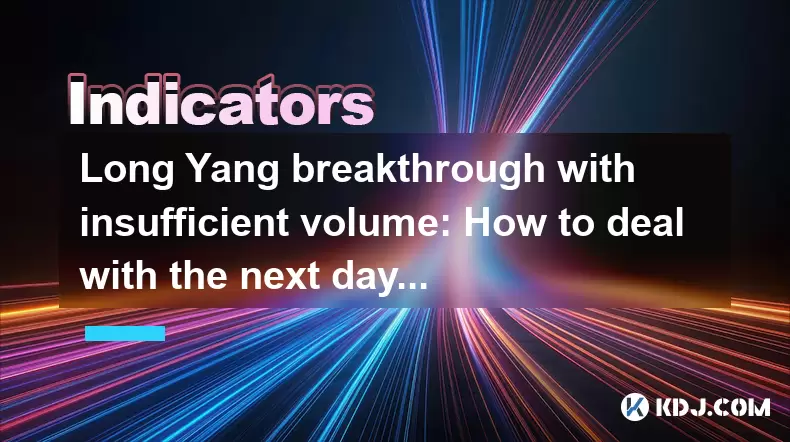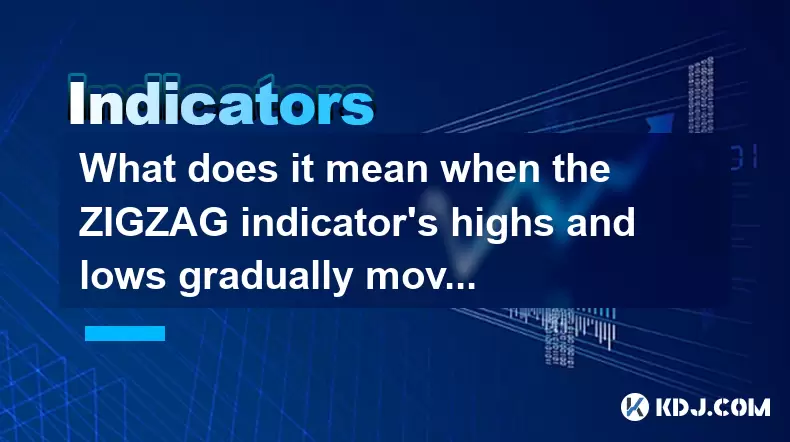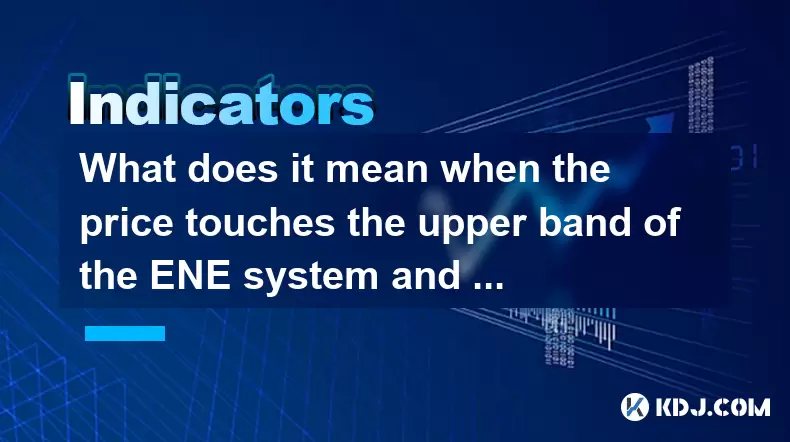-
 Bitcoin
Bitcoin $116600
0.11% -
 Ethereum
Ethereum $4235
4.72% -
 XRP
XRP $3.283
0.22% -
 Tether USDt
Tether USDt $1.000
0.00% -
 BNB
BNB $805.4
1.59% -
 Solana
Solana $181.8
2.27% -
 USDC
USDC $0.9998
-0.01% -
 Dogecoin
Dogecoin $0.2450
7.90% -
 TRON
TRON $0.3363
-0.80% -
 Cardano
Cardano $0.8161
2.85% -
 Hyperliquid
Hyperliquid $43.68
6.68% -
 Chainlink
Chainlink $21.20
8.50% -
 Stellar
Stellar $0.4526
0.64% -
 Sui
Sui $3.949
3.12% -
 Bitcoin Cash
Bitcoin Cash $571.3
-2.83% -
 Hedera
Hedera $0.2656
1.45% -
 Avalanche
Avalanche $24.41
3.14% -
 Ethena USDe
Ethena USDe $1.001
0.03% -
 Litecoin
Litecoin $122.0
-2.03% -
 Toncoin
Toncoin $3.425
1.51% -
 UNUS SED LEO
UNUS SED LEO $9.004
0.19% -
 Shiba Inu
Shiba Inu $0.00001381
4.36% -
 Uniswap
Uniswap $10.93
0.05% -
 Polkadot
Polkadot $4.117
3.93% -
 Dai
Dai $1.000
0.02% -
 Pepe
Pepe $0.00001235
3.53% -
 Bitget Token
Bitget Token $4.507
0.36% -
 Cronos
Cronos $0.1570
2.05% -
 Monero
Monero $274.9
0.14% -
 Ethena
Ethena $0.7511
15.68%
Long Yang breakthrough with insufficient volume: How to deal with the next day's retracement?
A Long Yang breakthrough with low volume may lead to a retracement the next day; traders should analyze market conditions and use strategies like holding or setting stop-losses.
Jun 03, 2025 at 10:15 am

In the world of cryptocurrency trading, encountering a Long Yang breakthrough with insufficient volume can be a challenging scenario. This situation often leads traders to face a retracement the next day, which can be daunting if not handled correctly. Understanding how to navigate this retracement is crucial for maintaining and potentially growing your investment. Let's delve into the strategies and considerations for dealing with such a scenario.
Understanding Long Yang Breakthrough with Insufficient Volume
A Long Yang breakthrough refers to a bullish candlestick pattern where the closing price is significantly higher than the opening price, signaling a potential upward trend. However, if this breakthrough occurs with insufficient volume, it may indicate a lack of strong market conviction. This can lead to a retracement the next day, where the price moves back towards the previous level.
When traders see a Long Yang breakthrough, they often get excited about the potential for a bullish trend. However, if the volume is low, it's a warning sign that the market might not sustain the upward momentum. This is because volume is a key indicator of the strength behind a price move. Insufficient volume suggests that fewer traders are participating in the move, making it more susceptible to a reversal.
Analyzing the Next Day's Retracement
When you wake up to a retracement the next day after a Long Yang breakthrough with insufficient volume, the first step is to analyze the market conditions. Look at the following factors:
- Volume on the retracement day: Is the volume higher or lower compared to the breakthrough day?
- Price action: Is the retracement shallow or deep? A shallow retracement might indicate that the bullish trend still has strength.
- Technical indicators: Check indicators like RSI, MACD, and moving averages to gauge the market's momentum.
By understanding these elements, you can better assess whether the retracement is a temporary pullback or a sign of a more significant shift in market sentiment.
Strategies to Deal with Retracement
When facing a retracement after a Long Yang breakthrough with insufficient volume, several strategies can be employed to manage your position effectively:
Hold your position: If the retracement is shallow and technical indicators still suggest bullish momentum, holding your position might be the best course of action. This approach requires confidence in the initial breakthrough's validity.
Set a stop-loss: To protect your investment, consider setting a stop-loss order just below a key support level. This can help limit potential losses if the retracement turns into a more significant downtrend.
Add to your position: If you believe the retracement is a buying opportunity, you might consider adding to your position. However, this strategy requires careful analysis to ensure the retracement is indeed a temporary dip.
Take profits: If you're unsure about the market's direction, taking partial profits can be a prudent move. This allows you to lock in some gains while still maintaining a position in case the bullish trend resumes.
Technical Analysis Tools for Retracement
Utilizing technical analysis tools can provide valuable insights when dealing with a retracement. Here are some key tools and how to use them:
Fibonacci retracement levels: These levels help identify potential support and resistance areas during a retracement. Plot the Fibonacci levels from the low of the breakthrough to the high, and watch for price reactions at key levels such as 38.2%, 50%, and 61.8%.
Moving averages: Use moving averages like the 50-day and 200-day to gauge the overall trend. If the price remains above these averages during the retracement, it may indicate continued bullish sentiment.
RSI (Relative Strength Index): The RSI can help identify overbought or oversold conditions. If the RSI is still above 50 during the retracement, it suggests that bullish momentum is not entirely lost.
MACD (Moving Average Convergence Divergence): The MACD can signal potential trend reversals. If the MACD line remains above the signal line during the retracement, it may indicate that the bullish trend is still intact.
Psychological Aspects of Dealing with Retracement
The psychological aspect of trading cannot be overstated, especially when dealing with a retracement after a Long Yang breakthrough with insufficient volume. Here are some tips to manage your emotions:
Stay disciplined: Stick to your trading plan and avoid making impulsive decisions based on fear or greed.
Manage risk: Always have a clear risk management strategy in place. This includes setting stop-loss orders and not risking more than you can afford to lose.
Stay informed: Continuously monitor market news and developments that could impact the cryptocurrency you're trading. This can help you make more informed decisions during a retracement.
Maintain patience: Understand that retracements are a normal part of trading. Maintaining patience and not reacting hastily can lead to better long-term results.
Practical Steps to Take on the Retracement Day
When the retracement day arrives, here are some practical steps you can take to navigate the situation effectively:
Review your trade plan: Before the market opens, review your trade plan and ensure you're clear on your entry, exit, and risk management strategies.
Monitor the market closely: Keep an eye on real-time price movements and volume. Use trading platforms that provide detailed charts and indicators to stay informed.
Adjust your stop-loss: If the retracement is deeper than expected, consider adjusting your stop-loss to protect your capital.
Look for entry points: If you believe the retracement is a buying opportunity, look for entry points where the price shows signs of stabilizing or reversing.
Evaluate your position size: Depending on your confidence in the market's direction, you might want to adjust your position size. If you're less confident, reducing your position can help manage risk.
Frequently Asked Questions
Q1: Can a Long Yang breakthrough with insufficient volume still lead to a sustained bullish trend?
A: While it's less likely, a Long Yang breakthrough with insufficient volume can still lead to a sustained bullish trend if other market conditions are favorable. Factors such as positive news, overall market sentiment, and subsequent volume increases can support the trend.
Q2: How can I differentiate between a healthy retracement and the start of a bearish trend?
A: A healthy retracement often shows shallow pullbacks with quick recoveries, accompanied by increasing volume on the rebound. In contrast, the start of a bearish trend may show deeper retracements, prolonged downward movements, and decreasing volume on any upward attempts. Technical indicators like RSI and MACD can also help differentiate between the two.
Q3: Should I always use a stop-loss when dealing with a retracement?
A: While using a stop-loss is a recommended practice for risk management, whether to use one depends on your overall trading strategy and risk tolerance. If you have a high confidence in the market's direction and can afford to hold through volatility, you might choose not to use a stop-loss. However, for most traders, a stop-loss can help protect against significant losses.
Q4: How important is volume in confirming a Long Yang breakthrough?
A: Volume is crucial in confirming the validity of a Long Yang breakthrough. High volume suggests strong market participation and conviction in the price move, making it more likely to sustain the trend. Conversely, insufficient volume can indicate weak market interest, increasing the likelihood of a retracement or reversal.
Disclaimer:info@kdj.com
The information provided is not trading advice. kdj.com does not assume any responsibility for any investments made based on the information provided in this article. Cryptocurrencies are highly volatile and it is highly recommended that you invest with caution after thorough research!
If you believe that the content used on this website infringes your copyright, please contact us immediately (info@kdj.com) and we will delete it promptly.
- Solana Meme Coin Presales: Hype or the Next Big Thing?
- 2025-08-10 02:50:12
- Pi Network, Altcoin Season, and Breakout Tokens: What's Hot in 2025?
- 2025-08-10 02:50:12
- Decoding Crypto Presales: Is Cold Wallet the New Neo Pepe?
- 2025-08-10 02:30:12
- Cryptos, 2025, Market Caps: Riding the Next Wave
- 2025-08-10 02:30:12
- Trump, Crypto Vehicle, and WLFI Tokens: A New York Minute on the Latest Buzz
- 2025-08-10 00:30:12
- Wheat Penny Fortune: Unearthing Valuable Coins in Your Pocket Change
- 2025-08-10 00:35:19
Related knowledge

What does it mean when the price is trading above the SAR indicator but the red dots are densely packed?
Aug 09,2025 at 11:49pm
Understanding the SAR Indicator and Its Visual SignalsThe SAR (Parabolic Stop and Reverse) indicator is a technical analysis tool used primarily to de...

What does it mean when the MACD histogram continues to shorten but the price reaches a new high?
Aug 09,2025 at 09:29pm
Understanding the MACD Histogram and Its ComponentsThe MACD (Moving Average Convergence Divergence) indicator is a widely used technical analysis tool...

What does it mean when the Triple Moving Average (TRIX) turns downward but the price doesn't fall?
Aug 09,2025 at 12:42pm
Understanding the Triple Moving Average (TRIX) IndicatorThe Triple Moving Average, commonly known as TRIX, is a momentum oscillator designed to filter...

What does it mean when the 10-day and 30-day moving averages repeatedly intertwine?
Aug 10,2025 at 02:42am
Understanding Moving Averages in Cryptocurrency TradingMoving averages are among the most widely used technical indicators in the cryptocurrency tradi...

What does it mean when the ZIGZAG indicator's highs and lows gradually move downwards?
Aug 10,2025 at 02:14am
Understanding the ZIGZAG Indicator in Cryptocurrency TradingThe ZIGZAG indicator is a popular technical analysis tool used by cryptocurrency traders t...

What does it mean when the price touches the upper band of the ENE system and then falls back?
Aug 10,2025 at 12:42am
Understanding the ENE Indicator StructureThe ENE (Envelope) indicator is a technical analysis tool used in cryptocurrency trading to identify potentia...

What does it mean when the price is trading above the SAR indicator but the red dots are densely packed?
Aug 09,2025 at 11:49pm
Understanding the SAR Indicator and Its Visual SignalsThe SAR (Parabolic Stop and Reverse) indicator is a technical analysis tool used primarily to de...

What does it mean when the MACD histogram continues to shorten but the price reaches a new high?
Aug 09,2025 at 09:29pm
Understanding the MACD Histogram and Its ComponentsThe MACD (Moving Average Convergence Divergence) indicator is a widely used technical analysis tool...

What does it mean when the Triple Moving Average (TRIX) turns downward but the price doesn't fall?
Aug 09,2025 at 12:42pm
Understanding the Triple Moving Average (TRIX) IndicatorThe Triple Moving Average, commonly known as TRIX, is a momentum oscillator designed to filter...

What does it mean when the 10-day and 30-day moving averages repeatedly intertwine?
Aug 10,2025 at 02:42am
Understanding Moving Averages in Cryptocurrency TradingMoving averages are among the most widely used technical indicators in the cryptocurrency tradi...

What does it mean when the ZIGZAG indicator's highs and lows gradually move downwards?
Aug 10,2025 at 02:14am
Understanding the ZIGZAG Indicator in Cryptocurrency TradingThe ZIGZAG indicator is a popular technical analysis tool used by cryptocurrency traders t...

What does it mean when the price touches the upper band of the ENE system and then falls back?
Aug 10,2025 at 12:42am
Understanding the ENE Indicator StructureThe ENE (Envelope) indicator is a technical analysis tool used in cryptocurrency trading to identify potentia...
See all articles

























































































